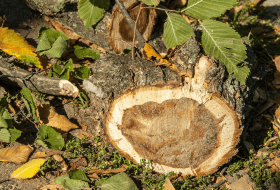Apply to remove a hedgerow
Page updated on: 15/01/2025
Carmarthenshire probably has one of the most complex networks of hedgerows of any part of Wales, and across the county our hedges are still maintained for agricultural purposes. As long-established features in the landscape, often providing a route between other habitats, they have become extremely rich in terms of the wildlife they support.
There are regulations to protect important hedgerows, in particular hedgerows which are more than 20 metres long or which meet another hedgerow at either end. It should be noted that garden hedges are not affected.
Under the Hedgerows Regulations 1997 (SI no 1160) it is against the law to remove most countryside hedgerows (excluding those forming garden boundaries) without permission. The way in which the Regulations apply to hedgerows can be quite complex, so you are advised to discuss your proposals with us at an early stage.
Some hedgerow trees are also covered by Tree Preservation Orders. Before carrying out any work to these trees you will need to contact us to gain the necessary consents.
To get permission to remove a hedgerow, you must write to us. You will need to submit a Hedgerow Removal Notice and a plan showing the hedgerow in question. Your application will usually be determined in 42 days. There is no fee for this application.
If we decide to prohibit removal of an "important" hedgerow, we must let you know within 6 weeks. If you remove a hedgerow without permission, whether it is important or not, you may be prosecuted, and you will probably have to replace the hedgerow.
You need permission to remove a hedgerow if it is on:
- Agricultural land
- Common land
- Forestry land
- Paddocks
- Local Nature Reserve
- Site of Special Scientific interest
You do not need permission under these regulations if:
- It is in or borders your garden.
- You are removing it to get access to replace existing access with another one, (which should be replanted within 8 months of making the new opening) or where there is no other means of entry or only at a disproportionate cost
- To gain temporary entry to help in an emergency
- To comply with statutory plant or forestry health order
- To comply with a statutory notice for preventing interference with electric lines
- In connection with statutory drainage or flood defence work
- To implement a planning permission (except in the case of permitted development rights)
But you must check that there are no covenants, planning permissions or conditions requiring the hedges to be retained.
How to make an application?
We encourage you to submit your planning applications online via Planning Application Wales.


